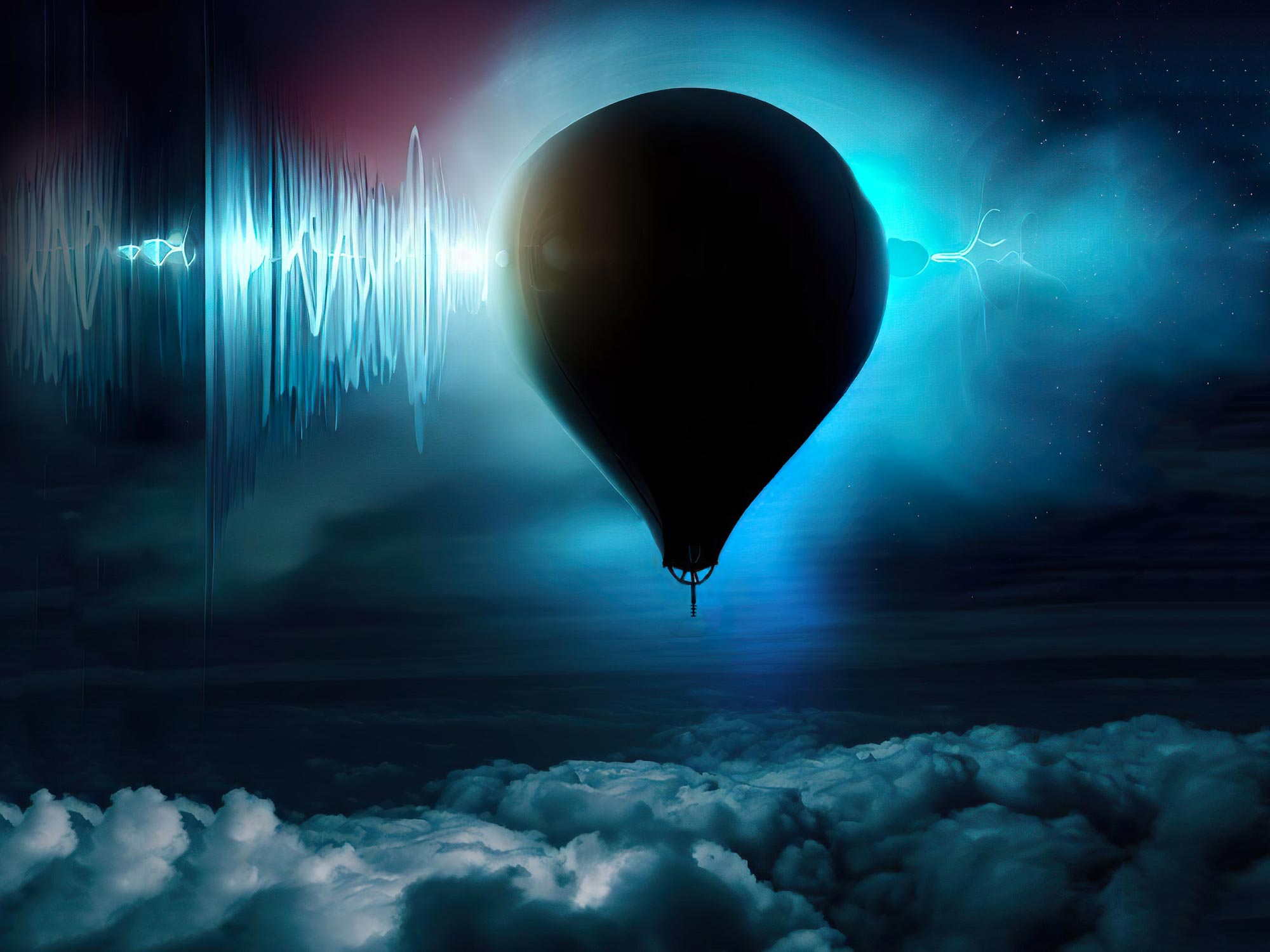
Daniel Bowman of Sandia National Laboratories uses inexpensive solar-powered hot air balloons to detect unique sounds in the stratosphere. This technology can be used to explore other planets.
Cheap and easy to build, these data-gathering balloons capture low-frequency sound in Earth’s atmosphere.
Imagine if sending your science experiment 70,000 feet into the air took painter’s plastic, tape, a little charcoal dust, and plenty of sunlight.
Daniel Bowman of Sandia National Laboratories presented his findings on using solar-powered hot air balloons to listen for stratospheric sounds at the 184th meeting of the Acoustical Society of America.
The stratosphere is the relatively calm layer of Earth’s atmosphere. Rarely disturbed by aircraft or turbulence, microphones in the stratosphere pick up a wide range of sounds not heard anywhere else. These include natural sounds from crashing ocean waves and thunder, man-made sounds such as wind turbines or explosions, and sounds of unknown origin.

Inflating a solar hot air balloon with an infrared microbarometer payload. Credit: Darielle Dexheimer, Sandia National Laboratories
To reach the stratosphere, Bowman and his collaborators are building 6- to 7-meter balloons. Despite their large size and data-gathering potential, balloons are relatively simple.
“Our balloons are basically giant plastic bags with some charcoal dust inside to darken them. We make them using painter’s plastic from the hardware store, shipping tape, and charcoal powder from pyrotechnic supply stores. When sunlight hits the darkened balloons, the air inside heats up and floats. “This passive solar energy is enough to bring balloons up to 20 km (66,000 feet) above the surface,” Bowman said. “Each balloon only requires about $50 worth of materials and can be built on a basketball court.”
Researchers collect data and detect low-frequency sound with microbarometers, which were originally designed to monitor volcanoes. After releasing the balloons, they track their routes[{” attribute=””>GPS – a necessary task since the balloons sometimes sail for hundreds of miles and land in hard-to-reach places. But, because the balloons are inexpensive and easy to construct and launch, they can release a lot of balloons and collect more data.
Along with the expected human and environmental sounds, Bowman and his team detected something they are not able to identify.
“[In the stratosphere,] “Some aircraft have mysterious infrared signals a few times an hour, but the source of these is completely unknown,” Bowman said.
Solar-powered balloons can also help explore other planets, i.e. observe them[{” attribute=””>Venus’ seismic and volcanic activity through its thick atmosphere.
Meeting: ASA 184th Meeting
